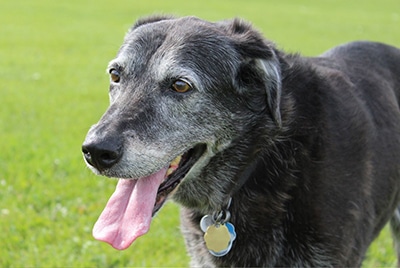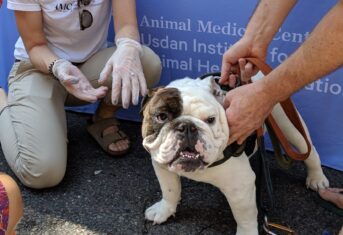Preventing Dementia in Dogs and People

Preventing Dementia in Dogs and People
The news about Bruce Willis’ diagnosis of frontotemporal dementia was heartbreaking. While I am not a fan of the “Die Hard” franchise, I always loved him as private investigator David Addison Jr. in “Moonlighting” with Cybil Shepherd. Whether you loved him as a comedy actor or in an action series, his talent was unmistakable and will be missed. His diagnosis of dementia made me think about dementia as it relates to our dogs. This blogpost shares what I found.
Cognitive Disfunction
Aging dogs, just like their aging human family members, experience cognitive decline. While veterinarians don’t make specific diagnoses like frontotemporal dementia, in about one to two percent of dogs, we make a diagnosis of cognitive dysfunction syndrome. Clinical signs of cognitive dysfunction syndrome noted by dog families include: forgetfulness and loss of housebreaking, staring into space or getting trapped in corners and abnormal sleep-wake patterns. Dogs with cognitive dysfunction syndrome may also forget basic commands like sit, stay and come.
Dog Aging Project
The Dog Aging Project is an innovative initiative that brings together a community of dogs, owners, veterinarians, researchers and volunteers to identify the biological and environmental factors that maximize healthy longevity in dogs. A recent publication studied over 15,000 dogs in the Dog Aging Project database. These dogs represented all dogs – young or old, male or female, purebred or mixed breed – living in all parts of the United States. No surprise, older dogs were more likely to score high on the Canine Social and Learned Behavior survey, an indicator of cognitive dysfunction. But more importantly, dogs rated by their owners as “not active” were over six times more likely to score high on the Canine Social and Learned Behavior survey when compared to dogs rated by their owners as “very active”.
More Steps Equals Less Dementia
We shouldn’t be surprised that more active dogs are less likely to develop cognitive dysfunction since humans who take more steps per day are less likely to develop dementia. In a recent study from the United Kingdom, people 40-79 years of age wearing wrist accelerometers were studied. A threshold of 3800 steps per day was associated with a lower risk of dementia, but the optimal number of steps was higher, about 10,000 steps per day. Data like this has caused the United States Surgeon General to recommend Americans to “Step it Up” and walk more. Dog owning Americans will be helping themselves AND their favorite fur person by walking more.
If you take this blogpost to heart and have decided to increase your pet’s exercise, here are some tips on how to keep your pet active.

































